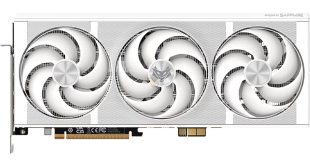To overclock the R9 290 today we use Catalyst Control Center in the latest BETA8 driver.
If you have read the whole review from the start then you will already be aware of AMD OverDrive changes to accommodate the new R9 290 hardware. Our testing today has highlighted that the R9 290 is a hot running card – set by default by AMD to hold at 95c, even if this means downclocking the core speed.
The higher we set the ‘maximum fan speed’ the better chance we have of holding the core clock speed at a constant 1,000mhz. We didn’t reduce the 95c ‘target GPU temperature’ as it means that the GPU core is more likely to downclock under any given circumstance.
To overclock we set the Maximum fan speed to 75% and the target GPU temperature at 95c.


We set the power limit to 26% and overclocked the GPU core by 14% achieving the 1080mhz final speed. Memory received a 6.2% increase to 1,328mhz.
The noise levels got high however, registering 43.3dBa under full load, not something I would want to live with on a regular basis. It was quite painful actually.


The overclock helped performance substantially – increasing the final graphics score from 14,004 points to 15,752 points – at these speeds, the card actually outperformed the R9 290X in UBER mode at default clock speeds.
 KitGuru KitGuru.net – Tech News | Hardware News | Hardware Reviews | IOS | Mobile | Gaming | Graphics Cards
KitGuru KitGuru.net – Tech News | Hardware News | Hardware Reviews | IOS | Mobile | Gaming | Graphics Cards



The price is great, but the cooler is certainly not……. waiting to see modified versions soon
The prices are hard to ignore, and its good to see Nvidia dropping prices lately too, they had been overcharging for quite some time now
I always wondered why they didn’t use a version of the HD7990 cooler. would have made more sense instead of something they probably used on a HD7850
Please, get rid of Furmark. It’s meant to stress GPUs at the max temperature before they are permanentely damaged. Nvidia drivers detect when Furmark is running and throttle their cards, so these results are biased. Measure real world power comsumption and temperature from games that are driven by different types of workloads – Rome: Total War 2, L4D 2, Battlefield 4 and GTA.
Hi Bob, it has never damaged any GPU in the years we have used it. and we only use it to supplement the temperatures from testing games.
I got AMD Radeon R9 290.. and it works great.. All games max graphics.. 😀 Thanks much